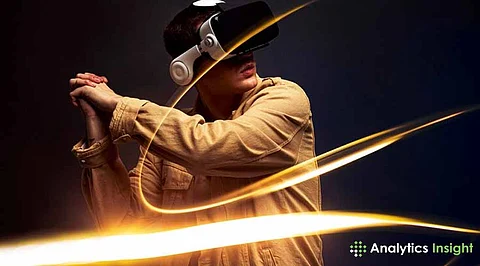

Virtual reality (VR) is typically seen as the wave of the future in immersive technologies. From very early beginnings with clunky, low-performance devices barely capable of performing the most elementary functions, VR headsets have evolved dramatically to become sleek, high-performance gaming, education, and healthcare devices and so much more. Advanced haptic feedback systems from VR headsets are poised to revolutionize user experience. This could send the whole industry into a whirlwind.
Haptic technology, used today often is the call for the tactile feedback or simulation of touch. The traditional VR system bases its experiences mostly on the visual and auditory stimuli. Advanced haptics change all that, providing users with devices such as gloves, suits, and controllers with sensors simulating touch, pressure, and even temperature.
For example, a user may feel the texture of a virtual object, or the weight of a digital tool, or the force of an explosion inside a VR game. Haptics give these feelings, making virtual experiences much closer to reality.
Advanced haptics within VR headsets can transform other industries:
Gamers always look for something a little more real, and advanced haptics delivers that. From the recoil of a gun in a first-person shooter to the sensation of gripping a steering wheel in a racing game, gamers can feel the virtual world as if it were real.
The entertainment platform, such as VR cinemas and theme parks, also would benefit. Imagine watching a VR movie feeling wind, rain, or vibrations while listening to the storyline-it's a new, entirely different way of engaging audiences.
Advanced haptics have already taken some steps into education and professional training. Medical students can now practice surgery with real tactile feedback, and engineers can handle 3D models of machines.
Similarly, advanced haptics could really make a difference in military and aviation trainings, thereby allowing safer and more realistic simulations for critical decision-making situations.
Advances in haptics in physical therapy will allow patients to exercise rehabilitation with real-time feedback, which would improve muscle memory and the rates of recovery. It can also be used by people with disabilities since it can present a virtual environment adjusted to their needs.
VR platforms such as Meta's Horizon Worlds bring the social into the virtual. Advanced haptics allows users to shake hands, hug, or even high-five someone in a virtual reality.
Advanced haptic systems are costly making them less accessible to the average consumer. The cost needs to go down without compromising the quality for it to reach more people.
A good integration of VR headsets and software is technically a must for any haptic feedback system. The compatibility between different devices and platforms is one of the significant technical issues a developer faces.
For advanced haptics to feel realistic, the feedback has to occur immediately. For example, where any delay between user input and haptic response violates immersion, it simply destroys the effectiveness of the technology.
Despite all these, it's quite evident that companies like Meta, Sony, and Apple are heavily investing in advanced haptics. HaptX and SenseGlove are new startups that are imminent in device haptic and making immense innovations in wearable solutions with lower costs and high performances.
Moreover, industries like gaming and healthcare are making both the hardware manufacturers and software developers collaborate to solve issues of compatibility and latency. Combined with the increases in AI and ML, the fidelity and naturalness of haptic feedback are only likely to get better over time.
Advanced haptics in VR headsets would indeed be a game-changer, introducing a new level of immersion and interactivity to virtual experiences. From gaming to healthcare, this technology may hold the transformative power required to reshape industries or redefine the way in which we interact with digital environments.
